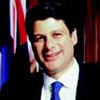 Steve Bracks |
In the 1890s, Bracks’ great-grandparents arrived in Australia from a town in Lebanon called Zahlé. About forty kilometres east of Beirut, Zahlé lies on the eastern slopes of Mt Sannin and forms the centre of business for the Bekaa valley… Another descendent of the Bracks family, Michael, started Bracks Slacks in Sydney, which is still one of Australia’s biggest men’s apparel suppliers. Other descendents from Lebanese include Australia’s most distinguished writer (David Malouf), the most successful name in Melbourne’s fashion industry (Jo Saba), two of Melbourne’s top chefs (Greg Malouf and Michael Bakash), and the Chief Executive Officer of the City of Melbourne (Michael Malouf)… These individuals are not only Lebanese, every one of these distinguished Australians can trace their origins back to the same town—Zahlé. |
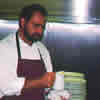 |
There’s something a shade more heroic in the path that he’s taken. Malouf’s family weren’t originally in the food business: ‘My father was in the rag trade. He was a marker up of women’s sportswear. He tried to drag the sons into it. Hard worker, good cook.’ His son preferred to make food his profession. He has since published his own cookbooks, including Arabesque, which was a hit with Melbourne’s Christmas market. |
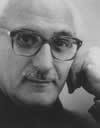 David Malouf |
… the dislocated experience of physicality in Malouf’s fiction reflects the stark difference between the physical cultures of Lebanese and Australian. Lebanese culture makes physical pleasures a priority—in eating fresh food, dancing and physical affection. By contrast, Australians reflect the English tentativeness towards the physical—in packaged foods, inhibited dancing and interpersonal distance. The Zahlé generation have been so successful in Melbourne because they have brought with them the warmth of hospitality and conviviality that is otherwise lacking in Anglo public life. |
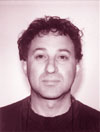 Neville Assad-Salha |
Assad’s vessels offer a Levantine reading of the Australian landscape as filtered through calligraphy. Whereas the Latin alphabet is easily associated with vertical landmarks, such as mountains, the horizontal nature of Arab writing is sympathetic to ground-based features. The eye searches for clusters of marks at odd angles to each other. It takes a horizontal scansion on the world, similar to Fred Williams’ gestural landscapes. |
 William Gladstone |
During Victorian times, any English gentlemen with pretensions to scholarship made a study of Phoenicians—the Semites whose feet actually did ‘in ancient time walk upon England’s mountains green’, for Phoenicians were trading with the Cornish people in tin and gold well before the Romans arrived. William Gladstone wrote several books on the subject, in between Prime Ministerial duties. |
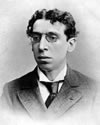 Israel Zangwill |
Zionist Israel Zangwill had approached Alfred Deakin in 1907 about the possibility of block settlement, but had been rejected. In the early 1930s, he and other Zionists cast around the world looking for potential sites of Jewish colonisation, including remote regions in Canada, Argentina and Uganda… In 1935, the London-based Freeland League proposed the purchase of seven million acres in the East Kimberley region for 50,000 refugees from Nazism. Dr Isaac Nachman Steinberg, once first minister of justice in Lenin’s revolutionary government, arrived in Australia to investigate its feasibility and garner support. He won the backing of many politicians and community leaders. |
| "Annual shows would also be held, representative of all branches of the community’s activities. Other Tasmanian industries should be encouraged to display their wares; this should be done at the Community’s own expense, so that the perfect amity and accord existing between the Jewish settlement and the Tasmanians be emphasised in this practical way. Later, other states of the Commonwealth and other countries should be encouraged to come here, so as ultimately to make the equivalent of the Leipzig Fair. This could be called the Pacific Fair." |
|
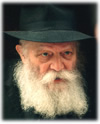 |
Melbourne businessman Joe Gutnick amassed a fortune in Western Australian mining ventures. He attributed his success to his spiritual advisor, the leader of the worldwide Lubavitcher movement, Rebbe Menachem Schneerson. The Rebbe encouraged Gutnick’s explorations for gold and diamonds, and gave Gutnick the special title of Lubavitcher Rebbe’s Special Emissary for the Integrity of the Land of Israel. Netanyahu’s election in 1996 is attributed to the money that Gutnick poured into his advertising campaign. |
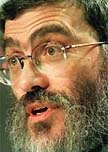 |
Gutnick has explored the Kimberley region following the |
 Mayor of Alice Springs, accepting a copy of the Koran, to commemorate Mayor of Alice Springs, accepting a copy of the Koran, to commemoratethe Last Afghan Camel Train from Oonadatta to Alice Springs, led by descendents of the first Afghan camelliers. |
|
